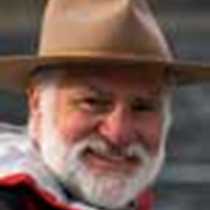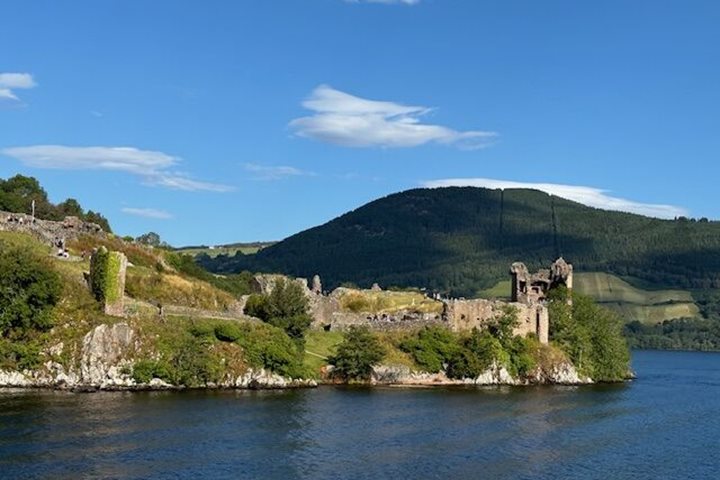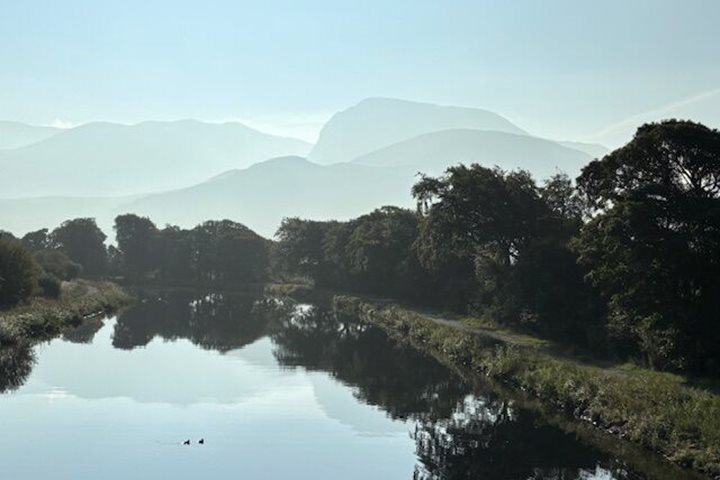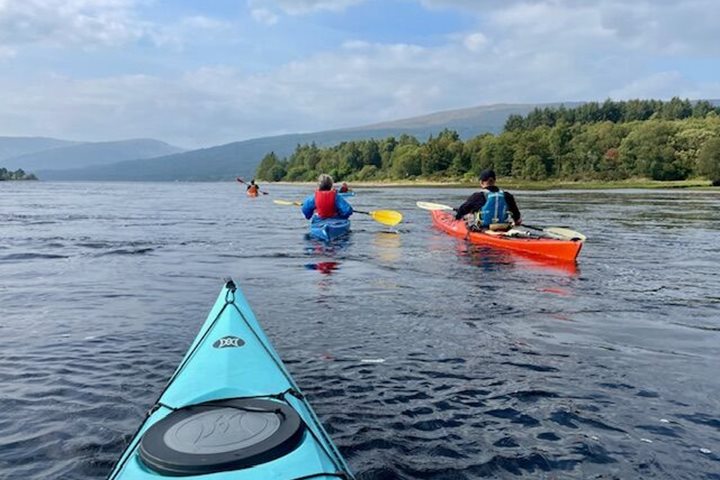Just after 07.00 hours, the Lord of the Glens cast off her lines and set off on another glorious morning for Craignure on the Isle of Mull. Along the way, we sighted northern gannets and European shags and sailed passed a very scenic lighthouse. We arrived right on time at Craignure. We were off the ship in a flash and headed for the coach that would take us across the Isle of Mull.
Along the way, we enjoyed the verdant hillsides, often laced with dense conifer forests and occasionally open, wooded areas that are reminiscent of what the woodlands must have looked like a long time ago. Our wonderful coach driver, John, pointed out salient features along the way, such as seals, geese, red deer, shelducks, and erratics. Erratics, one of the more exquisite words in the English language, describe rocks that have been left behind when glaciers retreat. Along the way and in the vicinity of the highest point, we saw many hundreds of these errant rocks as well as countless grass-covered mountains, likely moraines. On occasion, the hillsides were deeply scarred by gullies laced with tresses, causeways for the mountain streams that joined the gentler gradient rivers at the bottom of the main valleys.
Upon arrival at Fionnphort, we immediately boarded the ferry. After a short crossing, we arrived on the Isle of Iona. This small (five by two miles), low island became a hugely important monastery when it was founded in 563 by Colm Cille (Columba). Com Cille’s work had a huge impact on the whole region of what is today Scotland. The geology of the island is ancient. The Lewisian gneiss stretches back 2.8 billion years, and it isn’t the only rock type found on the island.
After a brief period to wander on our own, we met with our guide Jana, who expertly led us through the ruins of the Augustinian Nunnery, founded in 1200. From there, we passed by the small gravesite, situated just before the main abbey, where many monarchs are buried, including Duncan and MacBeth as well as the Scottish Labour MP, John Smith. We visited the abbey as well as the cloisters and finally the wonderful, small museum at the back of the monastery complex. Outside the abbey, we pondered the magnificent Celtic crosses with their intricate carvings and unique designs.
We enjoyed our lunch on this very special island before heading for the jetty. We boarded the ferry and then the coach before heading back across Mull for Duart Castle. This castle belongs to the MacLean clan and is inhabited. Upon arrival, we were guided around the castle and learned a lot more about the MacLeans and their long history here. After the tour, we hurried down for a cuppa and a scone and maybe a purchase or two in the gift shop.
On our way back, we stopped briefly at a field with a few Highland cattle, including two calves busily having their own tea. What splendid beasts they are. We continued to learn from our coach driver’s running commentary, which was filled with information in addition to being extremely funny.
Back on board, we rushed to get to the briefing before settling down to dinner. Afterwards, we listened to a very informative presentation on the work of the Hebridean Whale, Dolphin and Porpoise Trust.
It has been a long day, for sure, but what a splendid one!







